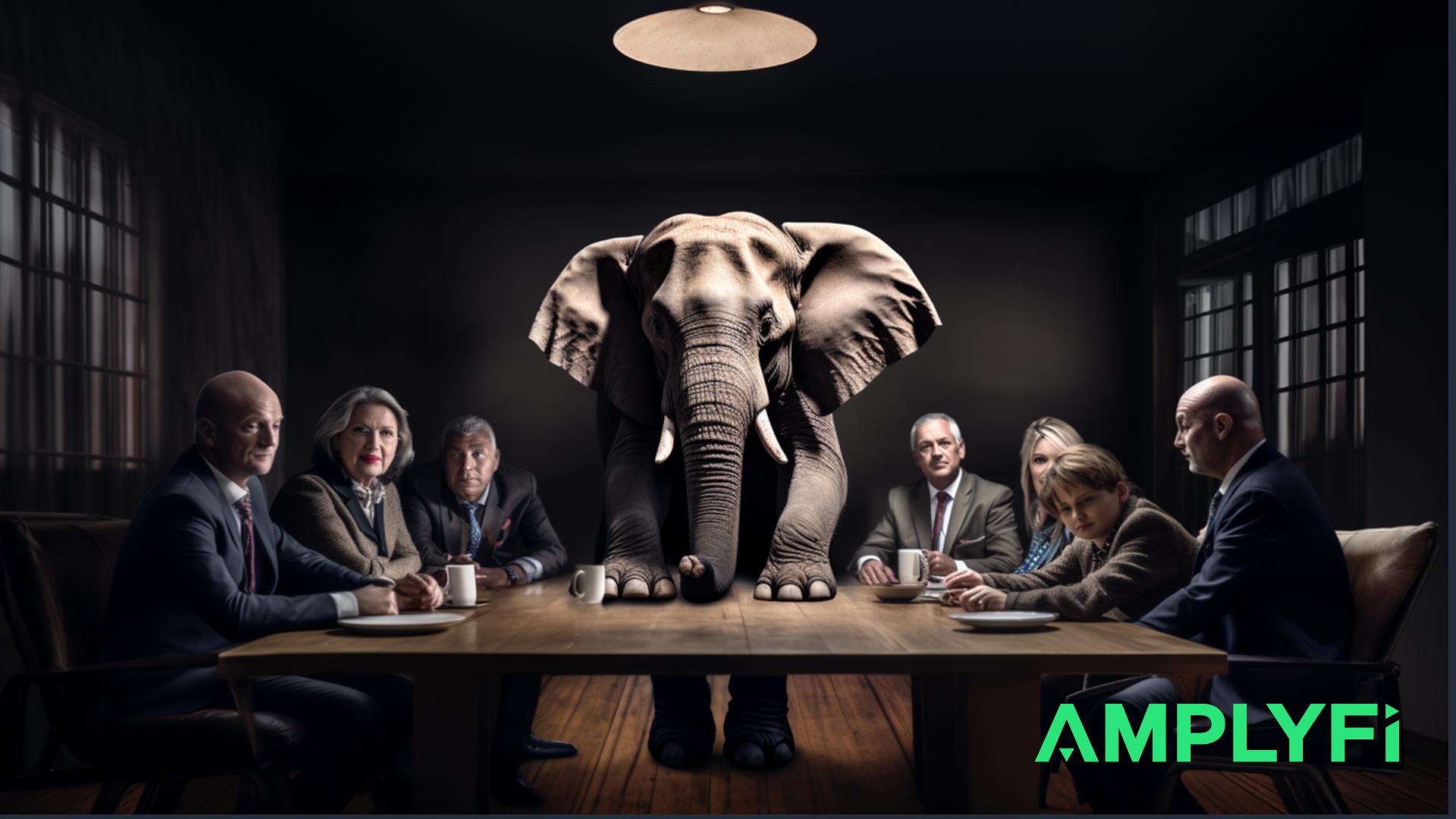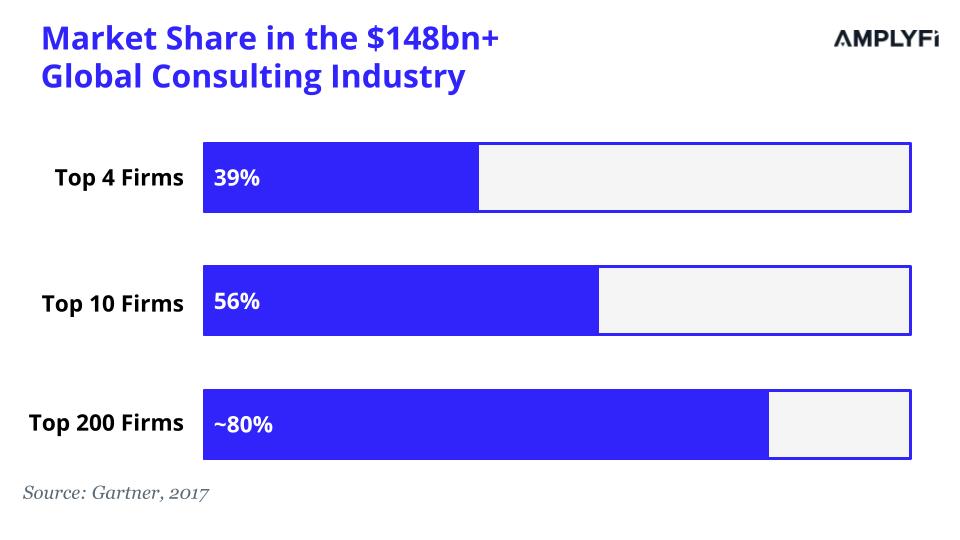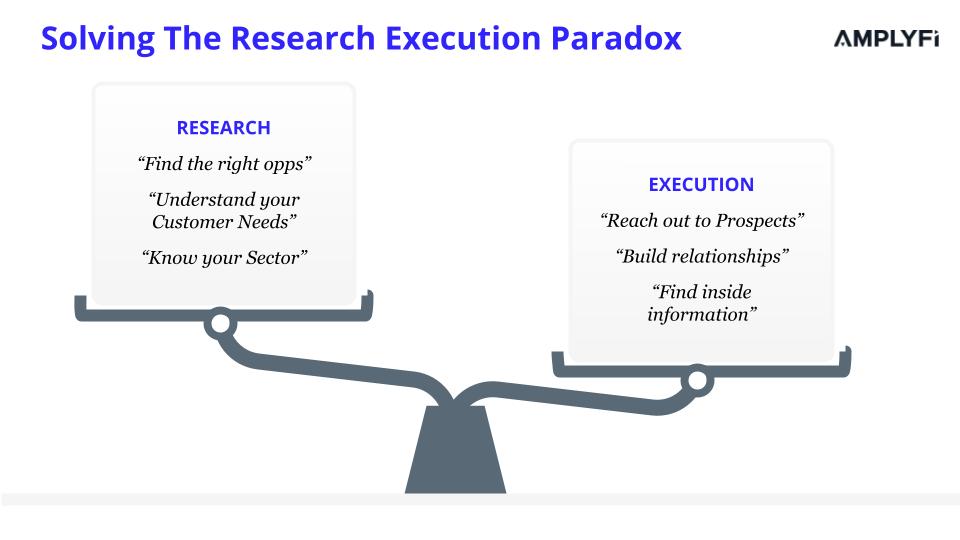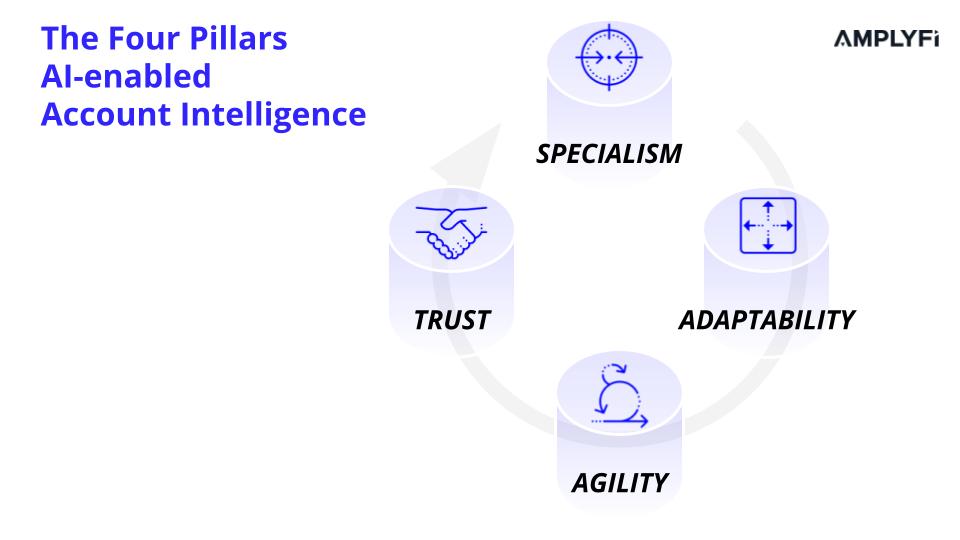
The Elephant in the Room for Consulting Firms
The top 6 global consultancy firms – Deloitte, PwC, EY, KPMG, Accenture, and McKinsey – dominate the management consulting market. With abundant resources, a wide breadth of service offerings, and strong brand recognition, these giants acquire the most new consulting customers and engagements worldwide.

For smaller consultancy firms, competing against these giants can seem daunting. However, smaller players can still thrive and take market share with the right strategies and technologies. This article discusses the challenges of adopting this approach and how AI is reducing the effort for early adopting Account Teams to take advantage and win market share against larger competitors.
Account Teams Say: Building and maintaining a high-level personalisation outreach plan is key for smaller consultancy firms to differentiate from larger competitors like the big 6. It’s unlikely you’ll beat them in functionality and power, you should aim to deliver a personal touch.
Is There Enough Time to Create Real Account Intelligence?
Balancing time between understanding customers and engaging with them is a constant challenge for Account Teams. Ideally, they would have infinite time to thoroughly research and position themselves to deliver maximum value for each client. Still, as that is impossible, it creates a Research-Execution Paradox that is challenging to get right.

Researching customers manually across sources such as LInkedin pages, news articles, and annual reports to find reasons to reach out is an unsustainable, scattered process. Without a better way to proactively engage clients with tailored talking points, the quality and quantity of interactions decline. This erodes the relationship-building edge that smaller firms rely on, putting accounts and contract renewals at risk as customers no longer feel uniquely supported.
Account Teams say: “Having an engaging reason to pick up the phone and develop the customer relationship is difficult in the current market. This ranges from addressing specific opportunities through to more generic interesting and relevant information to build the “trusted advisor” status.”
The Four Pillars AI-enabled Account Intelligence
We propose using AI to support Account Intelligence based on four pillars that can be used to drive Account Growth and increase competitiveness against larger rivals:
- Specialism – target emerging markets, demonstrate niche expertise
- Adaptability – find creative ways to align with customers’ objectives
- Agility – work to react to changes in customers’ needs proactively
- Trust – prioritise understanding your customers’ exact sector

Specialism – Target Niche Markets
By leveraging AI to seek out and understand niche and emerging markets, smaller firms can confidently position themselves as partners with the expertise to address the unique needs of potentially fast-growth customers.
Why Is This an Advantage?
Larger consulting firms have a wide reach across industries but may lack granular offerings for niche markets – as they need larger contracts to justify offerings. In contrast, smaller firms can find and develop knowledge in niche or emerging markets, but this can take significant research effort.
How Can AI Help?
AI can support Account Managers at Smaller Consulting Firms by automatically identifying and analysing weaker or smaller market trends, risks, challenges, and industry chatter. This enables account teams to become domain experts in more niche topics faster, even when they lack the background in that topic.
What To Do About It
- Analysing Disrupted or Disruptive Markets to identify fast growth niches – work with AI-Powered Market Intelligence tools to explore where new value will be created, both for you and your customers
- Double down on these spaces with monitoring tools that help you to surface opportunities earlier.
Adaptability – Better Align with Objectives
Why Is This an Advantage?
Larger firms often have standard service catalogues, retainers and governance structures that can take weeks to navigate. Smaller firms can use this by adapting to customers’ objectives in their propositions and commercials.
How Can AI Help?
Using AI, Account Teams can better understand their customers’ specific pain points and challenges on a project-by-project basis. Getting below the surface of the needs by analysing vast swathes of specific content from across the sector, about and announced by the customer to create a clearer Account plan.
What To Do About It
- Use AI-Powered Analysis to explore historical content about the company to unearth the direction of travel and fill in early account plans.
- Monitor the account during all engagements to surface hidden patterns and objectives – leveraging AI to surface these insights.
- Go broader and analyse competitors, regulators and disruptors in the customers’ sector to build a fuller picture of the forces acting on the strategy.
Agility – React Early to Customer Change
Why Is This an Advantage?
Larger Consultancies generally have more accounts than smaller ones and will often struggle to connect internally to align on project changes – everyone is seeking to fulfil their billable hours. Smaller firms should seek to leverage this advantage by being reactive to account needs and changing projects and working mid-flight to better align with changing customer priorities.
How Can AI Help?
AI can support this approach by monitoring accounts daily, parsing thousands of articles and online resources to uncover emerging signals and trends that may not make it to mainstream publications. This intelligence gives account teams an advantage in identifying weak or early signals and addressing them proactively.
What To Do About It
- Monitoring Accounts for Signals of Strategic Change – Ensure that you are covering all the potential angles, from announcements by leadership to rumours from trade press that may change your relationship
Trust – Focusing on Sector Change
Why Is This an Advantage?
Larger firms build trust through their brand, becoming the “default choice”, but this can be quickly eroded by interactions with team members who are uninformed, uninterested or misaligned with the customers’ needs. Smaller firms can keep the surface area of contact with a customer smaller and higher quality – focusing on demonstrating specific insights into their market from every touchpoint.
How Can AI Help?
AI can enhance this advantage by tailored marketing and personalised messaging for key accounts enabling account teams to free up valuable time. These messages and insights can also be used to brief other team members as they engage the Account, ensuring every interaction is aligned and value add.
What To Do About It
- Use AI tools to monitor your customers’ sector and regularly generate insights into wider sector changes to share with them proactively.
- Publish these changes internally to anyone working on the account to ensure alignment.
How Account Teams Can Build Their Insights Edge Using AI
“Generative AI is already helping copywriters draft content and computer programmers write code, boosting their productivity by 50% or more. It can do the same for salespeople.” – HBR 2023
Tools like AMPLYFI can support Account Teams at smaller Consulting Firms to spend less time researching and worrying about the perfect way to engage their customers and instead build relationships and crafting valuable solutions – outperforming larger rivals. To do this, we recommend:
- Monitoring Accounts for Signals of Strategic Change – ensuring that you are covering all the potential angles, from announcements by leadership to rumours from trade press that may change your relationship
- Monitoring Customers’ Markets for disruptions – going broader to ensure that you see the changes before your customers do so that you can build a trusted advisor status
- Analysing New or Fast moving Territories to identify niches – working strategically to explore where new value will be created, both for you and your customers.
- Building Proprietary Triggers – signals that drive the need for your unique solutions, be that at an industry or customer level, knowing when there is a need.
Whatever tool you choose, ensure it has flexible content, strong and smart filtering and customisable alerts. It is also worth looking for tools that use Generative AI in creative but trustworthy ways, such as generating unique insights, like AMPLYFI.








